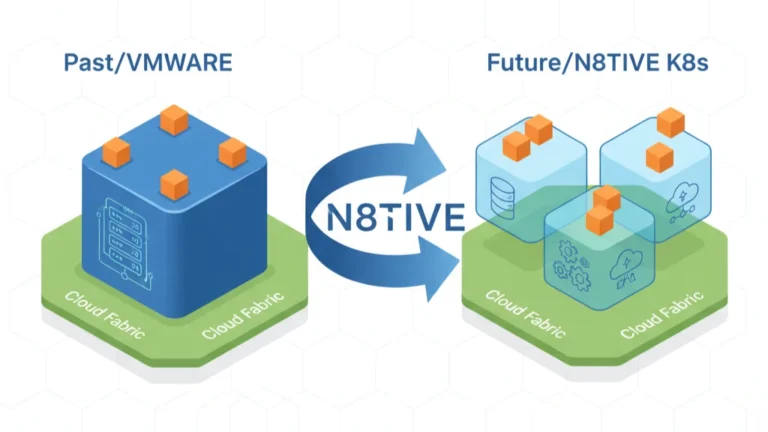
As a VMware specialist, you’ve mastered the art of managing virtual machines and vSphere environments. For years, VMware has been the solid foundation for your infrastructure. But lately, you might be feeling the strain. The constant cycle of VM maintenance and troubleshooting is eating into the time you could be spending on innovation.
If this sounds familiar, it’s time to talk about Kubernetes.
Kubernetes is the engine of modern development, but for a VMware expert, it can seem like a whole new world. This guide is designed to bridge that gap. We’ll walk you through the core concepts of Kubernetes, not as a foreign language, but as a direct evolution of the principles you already know and trust.
In your VMware world, the virtual machine is the basic unit of operation. It’s reliable, but it’s also heavy and often inefficient, with each VM carrying the overhead of a full operating system.
Kubernetes introduces a lighter, more agile alternative: the pod. A pod is a lean, efficient environment for your applications. Think of it like a VM, but without the bloat. In most cases, a single pod runs a single application, but the real magic happens when you use “sidecar containers.” These are additional containers within the same pod that handle tasks like logging, monitoring, or caching, all tightly integrated with your main application.
The result? Less maintenance, faster deployments, and a dramatic improvement in scalability.
You’re used to managing your environment through the vSphere Web Client. Kubernetes offers a similar level of control, but with a more modern, flexible approach.
kubectl: This is the powerful command-line interface (CLI) for Kubernetes. It gives you granular control over every aspect of your environment, from launching and stopping pods to managing complex configurations.
The Kubernetes Dashboard: For those who prefer a graphical interface, the Kubernetes Dashboard provides a familiar, vSphere-like overview of your environment’s health and performance.
This dual approach gives you the best of both worlds: the power of the command line and the clarity of a visual dashboard.
In VMware, you configure your VMs with VMX files. Kubernetes takes this concept a step further with human-readable YAML files. With YAML, you can define the desired state of your entire environment in simple text files. This includes everything from the number of active pods to resource limits and network configurations.
Once you apply a YAML file, Kubernetes works tirelessly to maintain that state. If a pod crashes, Kubernetes automatically launches a replacement. This “self-healing” capability means less time spent on manual intervention and more time for high-value tasks.
You already know the power of VMware resource pools for allocating resources to different teams and projects. Kubernetes offers a similar, but more powerful, concept called namespaces.
Namespaces create isolated virtual clusters within your Kubernetes environment, preventing resource conflicts and enhancing security. You can set resource quotas for each namespace, ensuring that no single team or application can monopolize your infrastructure’s resources.
VMware’s High Availability (HA) and Fault Tolerance (FT) are a cornerstone of a resilient infrastructure. Kubernetes achieves a similar goal with ReplicaSets.
A ReplicaSet ensures that a specified number of identical pods are always running. If one fails, Kubernetes instantly spins up a new one. Unlike VMware FT, where a shadow VM is on standby, all pods in a ReplicaSet are active, sharing the workload. This makes for a more robust and efficient high-availability solution.
Understanding Kubernetes is one thing; implementing and managing it is another. This is where N8TIVE comes in. We’ve taken the power of Kubernetes and engineered a platform that eliminates the complexity, allowing you to focus on what matters most: your applications.
With N8TIVE, you get:
Integrated Load Balancing: Say goodbye to manually configuring and managing external load balancers. N8TIVE provides built-in, automated load balancing that intelligently distributes traffic across your pods.
Simplified Storage and Networking: We’ve fully integrated storage and network management into the platform. Assign storage capacity with predefined profiles and benefit from automated network segmentation and security, all without complex manual configurations.
A Clear Path to Modernization: N8TIVE provides a seamless on-ramp to the world of cloud-native computing, perfectly tailored for organizations ready to evolve beyond traditional virtualization.
The shift from VMware to Kubernetes is more than just a technical upgrade; it’s a strategic move that can unlock a new level of agility and innovation for your organization. But you don’t have to make that leap alone.
Contact us today for a personalized demo and discover how N8TIVE can make your transition to Kubernetes a resounding success.
